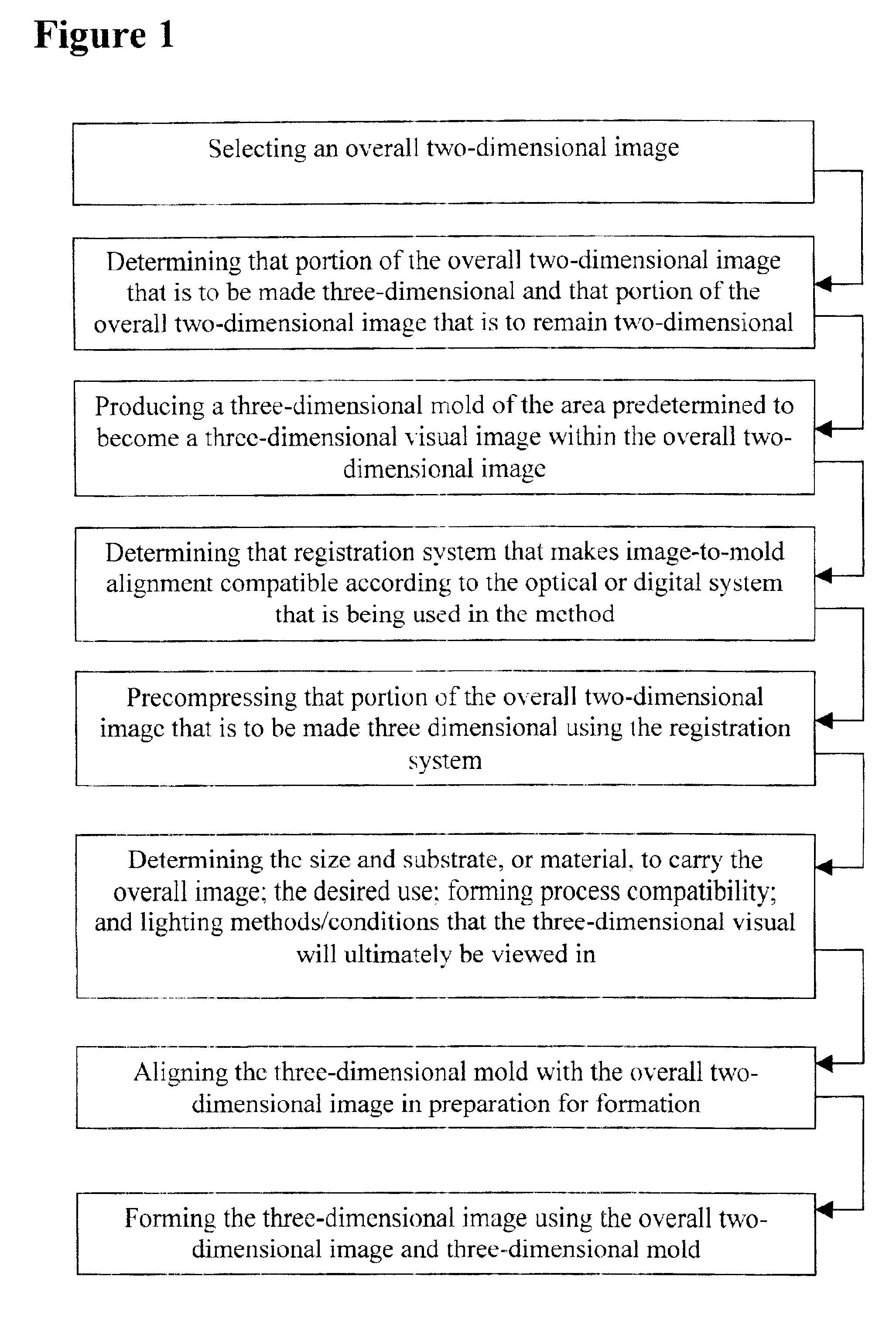Method for producing quasi-three dimensional images
a three-dimensional image and image technology, applied in the field of producing quasi-three-dimensional images, can solve the problems of difficult manufacturing, high cost, and inability to attract the same attention of three-dimensional displays, and achieve the effects of enhancing and intensifying viewer's interest, and increasing the noticeability of signs
- Summary
- Abstract
- Description
- Claims
- Application Information
AI Technical Summary
Benefits of technology
Problems solved by technology
Method used
Image
Examples
Embodiment Construction
[0010]The present invention provides a method to transform any portion of a two-dimensional visual image into a three-dimensional formed visual image device within the overall two-dimensional visual areas on a single image piece. The product then has both two-dimensional and three-dimensional aspects in the same single image piece, or visual device. Furthermore, the present invention provides a method that offers full control of the amount of visual distortion involved in the above processes.
[0011]The method begins by selecting a two-dimensional image. A three-dimensional mold is produced representing the area of the image that is to become three-dimensional. This may be all or a portion of the selected image.
[0012]The two-dimensional image is then put into a digital format, either by scanning, digital photography, or like methods. The area of the two-dimensional image that is to overlay the three-dimensional portion of the product is then compressed, such as by digital means. The c...
PUM
| Property | Measurement | Unit |
|---|---|---|
| thickness | aaaaa | aaaaa |
| area | aaaaa | aaaaa |
| size | aaaaa | aaaaa |
Abstract
Description
Claims
Application Information
 Login to View More
Login to View More - R&D
- Intellectual Property
- Life Sciences
- Materials
- Tech Scout
- Unparalleled Data Quality
- Higher Quality Content
- 60% Fewer Hallucinations
Browse by: Latest US Patents, China's latest patents, Technical Efficacy Thesaurus, Application Domain, Technology Topic, Popular Technical Reports.
© 2025 PatSnap. All rights reserved.Legal|Privacy policy|Modern Slavery Act Transparency Statement|Sitemap|About US| Contact US: help@patsnap.com


